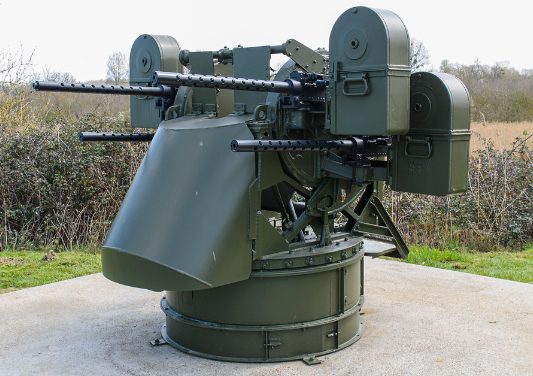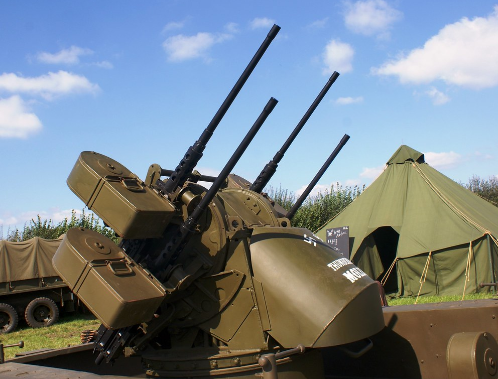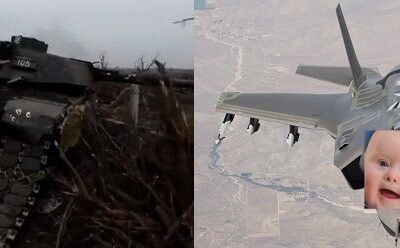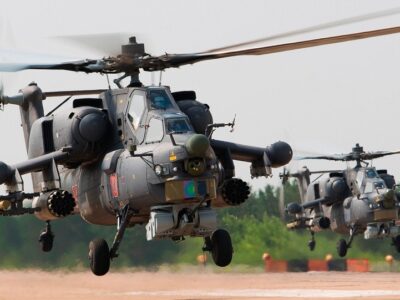The US Military Industrial Complex will never say no to a long disproven and frankly idiotic idea that failed more than half a century ago. Exhibit A: laser weapons. You see, UAVs sound kind of futuristic, which means that they are invulnerable to the peasant weapons of the 20th century.
No, it doesn’t actually make any sense that unmanned aircraft need to be destroyed any differently than manned aircraft. The supposed justification for shooting UAVs down with lasers is that missiles are too expensive.
3:00
The $2000 Mavic [UAV] is typically destroyed with missiles costing anywhere from $100,000 to $3,000,000. Although the [fucking retarded laser system] costs between $8-10 million, it can be used over and over.
This is almost a good point. I’ve covered before the obvious issues with using missiles that cost well over one hundred times the threat they’re attempting to shoot down. While the financial cost to the taxpayer is not the same thing as the resource cost to the military, there’s just no way you’re going to make any fast, rocket powered anti-air missile cheaper than the piston prop cruise missiles it’s being shot at. Firing a patriot missile that costs $4 million at a Shahed cruise missile that costs $40k, is the military equivalent of blocking a punch with your testicles, only worse.
So it’s true that missiles are too expensive to be used against pretty much anything other than manned aircraft. If only there existed some futuristic wonder weapon that required nothing more aiming and a quick trigger squeeze. What would we call this work of pure science fiction?

These future machines have destroyed plenty of quadcopters/aircraft in Ukraine/Russia. Lasers have destroyed zero.
Guns do everything that lasers are supposed to do. We don’t use lasers to shoot down UAVs over guns, for the same reason that we don’t give our infantry laser rifles instead of real rifles. Lasers are far less deadly, and many times heavier. That the shills pushing this worthless garbage are refusing to compare their systems to guns/AAA, which is the type of weapon that lasers actually compete against, is all you need to know.
1:40
The laser can take as many as fifteen seconds to take down a target.
Just make sure to keep targeting the exact same spot on the UAV for a full fifteen seconds. In addition to having impossibly perfect aim, telepathically force the UAV controller to never fly it behind any foliage, or other obstruction that hides it from your view for at least fifteen straight seconds. Also, make sure there’s no rain, clouds, or smoke in the way, since that scatters the laser. If the aircraft you’re trying to destroy is puttering about on a bright, clear, sunny day, you might have a chance at shooting it down, therefore it works.

Lasers, and the battery and cooling gear that comes with them, are so heavy that they need to be mounted on a vehicle, or towed by a vehicle and given their own carriage. In this respect, they are identical to the science fiction wonder weapons that can destroy aircraft (including UAVs) with a tenth of a second burst, punching through light foliage, smoke, clouds, other visual obstructions, and even light armour.

Above is the M45 Quadmount. It’s little more than four 50 cal machine guns cobbled together with a turret, and it works.
Heavy machine guns are the lightest form of anti-aircraft artillery. The largest AAA in NATO inventory are the 35mm Oerlikon cannons.
The Germans took two of them and shoved them on a vehicle they call the Gepard.
Guns/cannons have taken down tens of thousands of aircraft in real combat throughout the years. Lasers have taken down zero aircraft, despite laser weapons dating back to the 1960s. This is because lasers are a meme weapon, whereas guns are a real weapon.
However, we may have to change our assessment of lasers. You see, neither of the aforementioned guns has an “infinite magazine.”
Based in part on the progress made in high-power industrial lasers, militaries are finding an increasing number of uses for high-energy lasers. One key advantage for high-energy laser weapons is that they provide an “infinite magazine.” Unlike traditional weapons such as guns and cannons that have a finite amount of ammunition, a high-energy laser can keep firing as long as it has electrical power.
The magazine is infinite, until the battery power runs out. So I guess it’s like, not infinite at all then. More like “a totally finite magazine that relies on very limited battery power.”
The U.S. Army is deploying a truck-based high-energy laser to shoot down a range of targets, including drones, helicopters, mortar shells and rockets. The 50-kilowatt laser is mounted on the Stryker infantry fighting vehicle, and the Army deployed four of the systems for battlefield testing in the Middle East in February 2024.
It takes up to fifteen seconds for the laser to actually take down even the smallest UAVs, so let’s assume that the average shot time is at least ten seconds, at 50 kW of power. That works out to 0.139 kWhr of energy consumption. The largest Tesla electric car batteries are found in the Model S. The battery weighs 1,200 lbs, and has a capacity of 100 kWh. Therefore, with that 1,200 lbs battery – and additional cooling systems – installed to power our meme weapon, we get around 719 shots.
Jaime, can you find me the ammunition capacity for the Gepard please?
2 × 35 mm Oerlikon GDF autocannon, each with 320 rounds anti-air ammunition and 20 rounds anti-tank
Six hundred and fourty combined anti-air rounds for the Oerlikon. Eight hundred combined rounds for the M45 Quadmount.
The “tombstone” model M2 ammunition chests held 200 rounds each. [And there are four of them, one for each gun]
In reality, we don’t get 719 shots with our anemic laser that takes fifteen seconds to take down a tiny quadcopter, because the laser is not even 50% efficient, per The Conversation article.
However, to burn through materials at safe distances requires tens to hundreds of kilowatts of power in the laser beam. The smallest prototype laser weapon draws 10 kilowatts of power, roughly equivalent to an electric car. The latest high-power laser weapon under development draws 300 kilowatts of power, enough to power 30 households. And because high-energy lasers are only 50% efficient at best, they generate a tremendous amount of waste heat that has to be managed.
At best you get about 350 shots from this “infinite magazine,” which is less than you get from traditional anti-aircraft systems which aren’t even designed to have large ammunition capacities. The reason why no one has bothered to produce an anti-aircraft system that has enormous quantities of ammunition is because burst fire is the only thing we care about, for practical reasons. The M45 Quadmount, with its combined 2,300 rounds fired per minute, will go through its entire 800 round capacity in just twenty one seconds. This is fine, because aircraft are rarely visible for dozens of seconds at a time, even though they’d need to be for the laser meme to work.
Another important limitation for platform-based high-energy laser weapons relates to the infinite magazine concept. Since the truck, ship or airplane must carry the power source for the laser, and that will limit the power source’s capacity, the lasers can only be used for a limited amount of time before they need to recharge their batteries.
Infinite magazines, provided you recharge them. Guns don’t have infinite magazines, because you need to reload them. It makes sense. You’re just too dumb to understand.
There are also fundamental limits to high-energy laser weapons, including diminished effectiveness in rain, fog and smoke, which scatter laser beams. The laser beams also need to remain locked onto their targets for several seconds in order to inflict damage. Current prototype laser weapons are also proving a challenge to maintain in combat zones.
In exchange for a far heavier system that shoots a totally anemic laser, requiring the operator to somehow, someway, lock onto an aircraft for well over ten seconds even assuming their aim is perfect, you get fewer effective shots despite the “infinite magazine,” your weapon doesn’t work at all when there is smoke, fog, rain, snow, or even just light foliage in between you and the target, and it’s a nightmare to maintain.
 Furthermore, all these anti-aircraft guns/cannons can and are used against ground targets, so they have a dual function. Of course, you could theoretically also use the laser against ground targets. They fail against ground targets for the same reasons why they fail against aircraft, so I’m not really sure if that can be counted as an additional point against them.
Furthermore, all these anti-aircraft guns/cannons can and are used against ground targets, so they have a dual function. Of course, you could theoretically also use the laser against ground targets. They fail against ground targets for the same reasons why they fail against aircraft, so I’m not really sure if that can be counted as an additional point against them.
Additionally, the slight inaccuracy of the guns/cannons, especially when rapid firing, is actually a good thing, since it effectively enlarges the area under fire. The larger artillery shells, such as those fired by the 35mm Oerlikon, have proximity fuses which further expand the effective size of each individual shell. AAA is great for filling a small area with a cloud of projectiles, which is what we want.
The only theoretical advantage the a laser has is that the laser travels at the speed of light, and therefore does not require any leading, which simplifies aiming at the expense of all the problems listed above. That, and the reduced risk of friendly fire, because you’re using an anemic weapon that doesn’t do shit.
This garbage reminds me that, years ago, I started writing an article titled “railing against rail guns.” I scrapped the draft, because rail guns are so stupid that I felt my time was being wasted. In short, they do not have any advantages over real guns.
Unlike gunpowder, which is extremely space efficient for burst power creation (something a gun needs), rail guns need a massive electrical power generator, such as the nuclear reactor on a ship, to charge a capacitor between shots, which is slow and impractical. The much hyped speed of the projectile is orthogonal to the technology, since that is achieved through a sabot round, something that all artillery cannons could make use of but don’t, because that ruins the ballistics of the shell and limits the amount of explosives inside. In exchange for this speed, the barrel melts after just a few firings.
Any real engineer could have told them all this after a few minutes of study, but they felt the need to waste at least fifteen years and $500 million before eventually submitting to reality.

Look, I get it. Rail guns are neat. Lasers weapons are neat. Shooting lasers at UAVs sounds really science fiction-y. The same is true for giant humanoid mechs engaging in MMA fights against other giant mechs, but Neon Genesis Evangelion wasn’t a real documentary, and these ideas belong in video games, not real life.

Iran… no.
Ideas that failed in the 1960’s don’t magically work today, no matter how cool they are. However, no matter how stupid an idea is, you’d can make good money betting that either China, Russia, Japan, and many others will fall over themselves copying an expensive boondoggle. They’ve got their own military industrial complexes after all.
















They need small caliber automatic sentry’s
niggas just cant accept that we are never moving out of dieselpunk with mild nukepunk era.
if i had to say what has actually changed the most about military logistics outside of different recon methods radar et all.
id say its the immense abundance of electrical power and batteries themselves, which has not allowed for lasers lol, but smaller vehicles (drones) doing smaller tactical missions.
cant after all have a drone on fuels really, the machine gets too heavy and batteries are light.
thats it, for the rest most militaries would be wise creating small wiesel gepard like things, 20mm cannons on a small platform for brigade as escort, have a radar on it, give it stabilizing pins to settle into ground, and tadah you have good comfortable semi mobile anti air system that can also work a heavy infantry support gun that does not annoy the infantry for once.
Batteries are much heavier than fuel, but the piston engine is far heavier than the electric engine and accompaniments such as the exhaust, etcetera. Other than that, I could not agree more. Literally the Warthog from Halo is a more practical, realistic anti-UAV weapon than lasers.
my apologies, i kind of combined electromotors with batteries in my mind.
“Space” is also a meme, just in case we still need to establish that.
You’re telling me that the Space Force isn’t going to be winning wars anytime soon? That’s crazy talk.